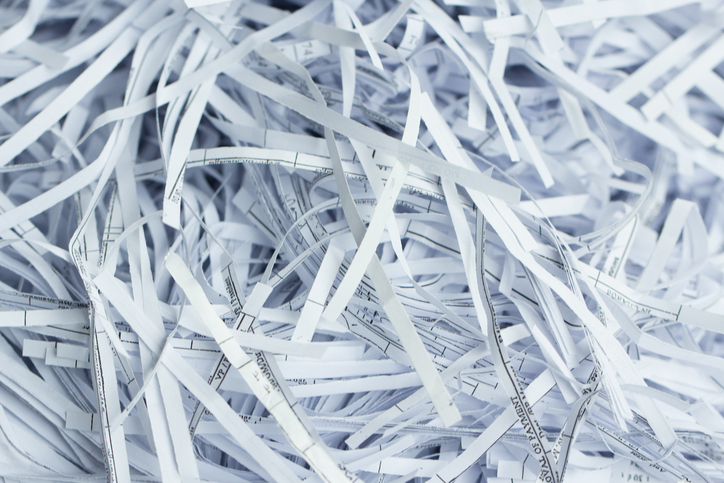Go Green: 10 Tips For an Eco-Friendly Business

Practicing environmental awareness and responsibility at your place of business should not be limited to a single day of the year, but should be part of our daily lives. By promoting office sustainability, your eco-friendly business not only helps protect the environment, but also benefits from lower costs and conservation of resources. Plus, an eco-friendly business appeals to millennials, a large part of the workforce your business needs to recruit and retain.
If your business or nonprofit organization is not doing so already, consider following some of these tips and go green.
1. Use less paper when printing
Do you really need to print out the entire presentation in color, just to see how it looks like? Use less paper by printing on both sides, use single space or change your font to a smaller size. Make sure your office purchases recycled paper as well. Or, better yet, don’t print at all. Use cloud storage and file sharing providers like Dropbox or Google Drive.
2. Send texts instead
If your organization is still printing out paper memos and stuffing boxes with them in the mailroom, remember this statistic: one ream of paper (500 sheets) is about 6% of a tree, according to Conservatree. Considering the number of people that throw those papers away without even reading it, you are better off using SMS to communicate to employees instead, and linking to a pdf. Ninety-eight percent of text messages are opened and read within minutes, without using a single sheet of paper.

Photo by Priscilla Du Preez on Unsplash
3. Shred paper and use as packing material
Another option is to shred paper documents. It’s important for confidentiality purposes, but it can also serve as packing material for companies that do a lot of shipping.

4. Fill out forms online
There are forms for just about everything – leads, new visitors, new members, employee benefits, parking lot applications, you name it. Create online forms using tools like Google Forms or JotForm and capture the information you need without wasting a sheet of paper. Or, use Acrobat to turn a pdf into an interactive form you can fill out using your computer.
5. Use rechargeable batteries and recycle single-use ones
For devices in your office that require frequent recharging (like those noise-canceling headphones commonly seen in today’s open-plan office spaces), rechargeable batteries are the way to go. According to the Sierra Club, they don’t really lessen pollution problems any more than single-use batteries, if recharged less than 20 times. If you do use single-use batteries, create a bin for recycling or visit earth911.com to find places to recycle. Only 10% of the 5 billion batteries sold in the U.S. every year are recycled.
6. Add plants to your office and trees to the planet
Plants create fresh oxygen for those stuffy offices, decreasing stress and promoting overall workplace health. They filter out toxins in the air and keep your work environment cooler. Plus, they look nice!
Also, if you have an outdoor space, consider planting a tree. Even if you don’t have a space to plant your own, you can organize a team offsite and help volunteer planting trees or, donate to organizations that do. At TextMarks, we have donated to organizations like The Nature Conservancy to help create healthy forest habitats all across the country.
7. Take the stairs instead of the elevator
Elevators use up varying amounts of energy depending on type of elevator, the height of the building and the amount of people it carries. Even if no one uses the elevator, energy is still consumed. According to a study of a 16-floor building in Ohio by ThyssenKrupp, a third of the elevator’s daily energy consumption happened after business hours. So, challenge your employees to take the stairs more often!

8. Get off the junk mail list
Part of going paperless means getting less mail. Call the companies sending you mail and ask to be removed from their list. Or write “Refused” on the envelope and send it back. You can also contact the Direct Marketing Association and ask to be removed for up to five years. In the meantime, be sure to place all junk mail in the recycling bin instead of the trash.
9. Implement a new thermostat set point policy
Office temperature is a daily battle. When you have a big office or many buildings to manage, it is almost impossible to keep everyone happy with the temperature. Some employees are peeling off layers while others are shivering, but everyone would seem to prefer the thermostat be set to something else. Follow the lead of Washington University’s Office of Sustainability, which implemented a policy of 73-76 degrees in the warmer months and 69-72 degrees in the cooler months. This will save the university $200-$300K a year in energy savings and is equivalent to taking 500-850 cars off the road reducing carbon emissions by 5-8%.
10. Make environmental goals a regular part of your employee communications
Any steps taken to make eco-friendly changes in your workforce are important, but to make a big impact, your employees need to get the message. Set environmental goals for your company and make sure your company’s values are communicated to every employee in email, by text, in company meetings and on signage throughout your office.
Interested in cutting down on paper and becoming a more eco-friendly business by using SMS? Contact TextMarks here or call 800-696-1393.


















